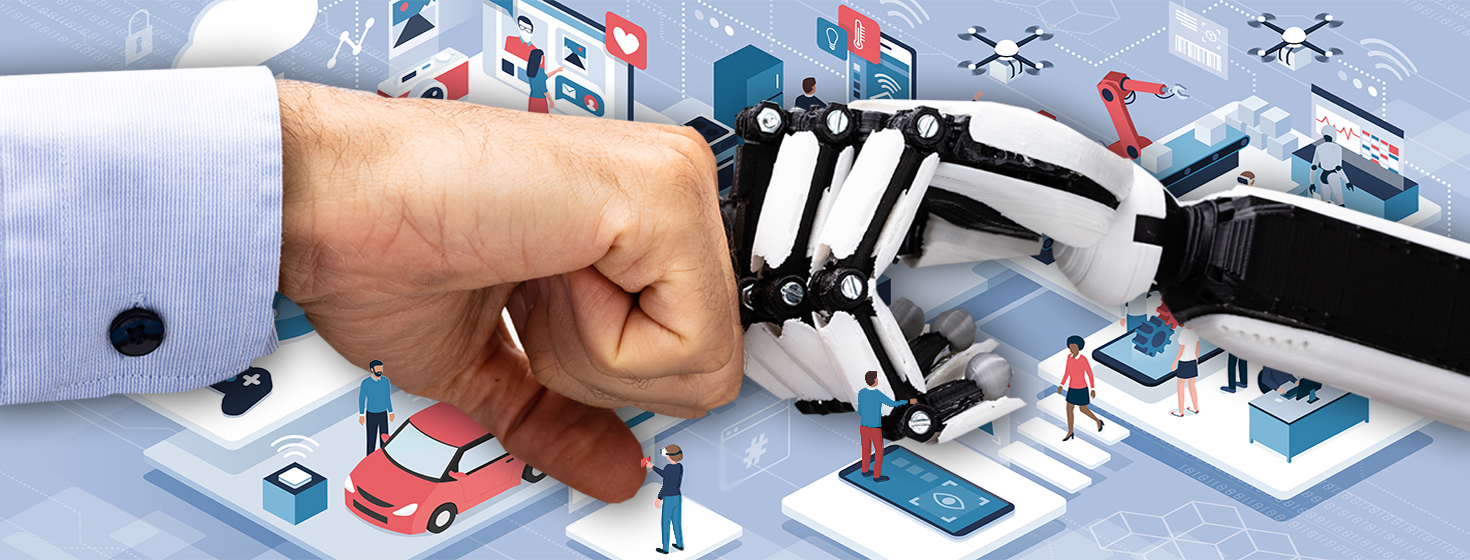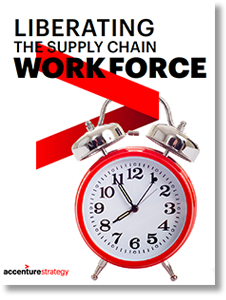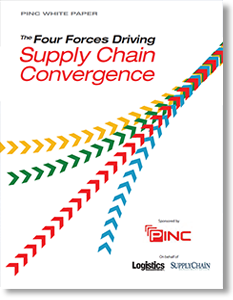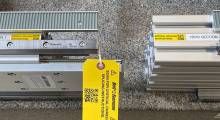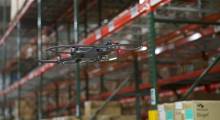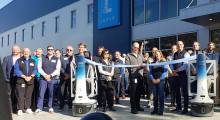Robots Adding Another Level of Automation
For centuries, hand tools helped humans build dwellings, clothing, food containers and vehicles.
The introduction of power tools then made it possible to complete this work much more quickly and with a lot less effort.
Not long ago, robots added yet another level of automation by making it possible to get work done even more efficiently and by providing information about their operations.
During this time, it often seemed that designers were trying to build automated systems to replace workers completely.
But recently, there has been a significant shift toward building robots that can work in harmony with humans.
Humans and Robots
The interactions between humans and robots have been limited for many years.
Robots were designed to work in a confined space, away from human workers, to prevent injuries.
As such, they usually performed basic, repetitive tasks on automated assembly lines. Humans mostly interacted with them for programming and maintenance.
As technology progressed, robots were given the ability to move around the workplace as automated guided vehicles (AGVs).
For safety and predictability, AGVs are programmed to move only along predetermined paths within a facility and are equipped with sensors that detect humans or objects in their paths to direct the AGVs to avoid accidents.
Further advances have made it possible for robots to move and work in a variety of places. An operator can control them wirelessly or through wired connections.
This type of situation builds a direct relationship between the robot and the human worker and allows the robot to take on meticulous, challenging and hazardous tasks - such as searching for humans or animals in burning buildings or performing military battlefield operations.
More recently, flying robots, or drones, have been designed to help with surveillance and other operations that are challenging for humans. The military initially was the leader in drone use, but corporations also are adopting them to survey construction zones, deliver packages and monitor inventory in warehouses, among other tasks.
In spite of all of these advances, only 10 percent of manufacturing tasks are currently automated (Brown et al. 2017). To better take advantage of this innovation, companies are designing collaborative robots, or cobots, that can safely work in tandem with humans.
“The new generation of robots are safe, smart, collaborative and can work side-by-side with people, they have become immensely sophisticated, resulting in modern robots that are increasingly being used as a mechanism to automate business processes that have historically been incapable of automation.” John Santagate (2018)
Ready to Work
Cobots and their less-developed relatives have the potential to help human workers in a variety of industries:
Manufacturing: Boeing and Ford Motor Company both have been pursuing robotic exoskeletons to help reduce risks to workers (Hitch 2018). For even more human-robot collaboration, Volkswagen is teaming up with Dresden, Germany-based startup Wandelbots to more efficiently train industrial robots using an innovative jacket fitted with sensors and actuators. The sensors on the jacket detect human movements in real time, and the actuators provide haptic feedback. In this way, a robot can watch a human complete a task and then absorb the movement data to imitate the actions (MM&D Online Staff 2018).
Distribution: In distribution and fulfillment centers, robots have been programmed to assist with order picking by traveling to a specific location to pick a pallet of an item or, in more advanced scenarios, individual items. In these cases, a human double-checks the robot’s work. Amazon, through its acquisition of Kiva Systems, is a leader in the use of robots in fulfillment and boasts more than 80,000 robots across 25 centers. With robots, Amazon has been able to reduce delivery times, improve productivity and cut operating costs (Santagate 2018).
Apparel: Sewbots are helping to decrease costs and promote worker safety in the clothing supply chain. These robots are a combination of artificial intelligence, robotics and 3D printing (Lennane 2018). Once sewbots are implemented, customers can interact with them via an app to order custom-made clothing. The app receives a picture of the customer, discerns the exact body measurements, sends the data to the nearest sewbot plant, and then directs the sewbot to create the customized article of clothing. It is expected that this technology will shorten supply chains and reduce reverse-logistics costs because customers won’t need to return clothing that does not fit as expected.
Retail: Robots soon will be able to interact with customers to help them find a product in a store, identify alternative fulfillment options if a product is unavailable and complete transactions. So far, robots are to helping complete inventory management tasks by roaming store aisles to check for out-of-stocks, incorrect prices, and wrong or missing labels. Walmart is testing such robots in its retail stores, and early reports show that employees like using the robots to perform boring, repetitive tasks. In addition, customers were fascinated by, or at least indifferent to, the presence of the robots.
Read: Warehouse Drones Ready for Digital Inventory Management
Furthermore, chatbots are being used for self-service retail tasks, and their use is expected to expand. Many consumer-facing companies, including banks and internet service providers, employ automated systems or virtual assistants to help customers with basic tasks over the phone or through internet chats. As machine learning, artificial intelligence and natural language technologies improve, these chatbots may be able to help with more complicated customer service tasks as well.
National security: Drones have been used by the military for some time and likely will grow in use for border security, tracking of criminals and carrying equipment to remote areas. Robots will be used for bomb retrieval, roadside inspections and transporting equipment over treacherous terrains, such as ice or forested areas (Morrissey 2018). These applications will keep humans safe and help them complete their missions.
Another developing national security innovation is the use of drone boats to detect submarines operated by drug smugglers. Until now, drug enforcement agents have used sonar arrays, or long cables covered with underwater microphones dragged behind a boat, to search for these submarines. These devices are limited in the amount of area that they can cover. However, this new approach would give greater coverage and higher rates of identification of the drug submarines (Levin 2017).
Transportation: Although autonomous cars present a multitude of benefits, this is one robot that might struggle to work harmoniously with humans. These cars are programmed to drive in optimized ways and follow strict rules. Humans, on the other hand, are rule-benders and may change lanes or turn without signaling, following too closely, run a red light, or deviate from the rules of the road in other ways. Likewise, pedestrians may enter or cross the street at unexpected places and times. Nyholm and Smids (2018) conclude, “Mixed traffic will create various human-robot coordination issues, which can create dangerous situations and lead to crashes and accidents.”
A self-driving car owned by Uber struck and killed a pedestrian earlier this year (Jenkins 2018). However, a police investigation found that the woman appeared from the shadows and crossed the street outside of a crosswalk, even though a well-lit crosswalk was available approximately 100 yards away. In fact, the local police chief reported that it would have been difficult for a human driver to avoid such a collision.
Preparing for Change
Technology is changing rapidly, and humans need to accept their robot counterparts. Richards (2017) adds that the modern factory must quickly align itself to the cultural change forced upon it by the advances in technology.
Read: The Future of the Supply Chain Workforce Will Be Determined By Technology Talent
Humans also must learn how to build relationships with robots. Training can teach us how to perform the technical parts of the human-robot relationship and condition our attitudes toward robots. This feeling often hinges on how the robot is used with regard to the person’s job - in other words, whether it is viewed simply as a machine or as a coworker.
Finally, processes and infrastructure will need to be updated to fully use robot capabilities. Automation eliminates tasks within a job but doesn’t necessarily eliminate the job itself. Humans still must perform some of the most important job tasks - primarily those that involve planning and analysis functions and contact with customers. Building designs and physical layouts will need to be modified to best accommodate the robots in a safe and effective manner. In the case of autonomous vehicles, roadways, intersections, pedestrian crossings, signal light, and signs must be updated so that robots can more easily interact with them.
The future success of many companies will depend on how well they organize and manage human-robot interactions. Corporate leaders should encourage workers to embrace their robot counterparts and make room in their facilities and processes for new types of automation. Together, humans and robots can create a safer, more efficient working world.
Read: A New Age of Future Jobs and 10 Skills You’ll Need to Master in Order to Succeed by 2020
References
Brown, S.; A. Woods; H. Pierson, Ph.D.; and G. Parnell, Ph.D. “An Operations Management Perspective on Collaborative Robotics.” Paper presented at the International Annual Conference of the American Society for Engineering Management, Huntsville, AL, October 18-21, 2017.
Hitch, John. “Boeing, Ford Don Exoskeletons to Dress for Success.” Industry Week, March 7, 2018.
Jenkins, Aric. “Police Say Uber Is Likely Not at Fault for Its Self-Driving Car Fatality in Arizona.” Fortune, March 20, 2018.
Lennane, Alex. “‘Sewbots’: The High-Tech Revolution with Designs on Fashion Logistics.” The Load Star, March 3, 2018.
Levin, David. “Robot Boats and Drug Subs.” Bostonia, October 4, 2017.
Morrissey, Devin. “Top 5 Industries Where Robotics Will Flourish over the Next Decade.” ECN, January 8, 2018.
MM&D Online Staff. “VW Trains Robots Using Jacket.” Materials Management and Distribution, March 15, 2018.
Nyholm, S. and J. Smids. “Automated Cars Meet Human Drivers: Responsible human-robot coordination and the ethics of mixed traffic.” Ethics and Information Technology (2018).
Richards, D. “Escape from the Factory of the Robot Monsters: Agents of Change.” Team Performance Management 23, no. 1 (2017): 96-108.
Santagate, John. “The Robots are Coming Here.” Supply Chain Management Review 22, no. 1 (2018): 26-31.
For a list of more than 100 annotated references about this topic, contact the author at [email protected].
About the Author
Richard E. Crandall, PhD, CFPIM, CIRM, CSCP, is a professor emeritus at Appalachian State University in Boone, North Carolina. He is the lead author of “Principles of Supply Chain Management.” Crandall may be contacted at [email protected].
Related Article: How Humans and Robots Will Work Side-by-Side in the Supply Chain
Related Resources
Using Autonomous Robots to Drive Supply Chain Innovation
This paper details how new technologies are presenting promising opportunities for improvement across the supply chain and how autonomous robots and drones are poised to change the game. Download Now!
Liberating the Supply Chain Workforce
Robots, prescriptive analytics and artificial intelligence (ai) are liberating untapped human potential in the supply chain, are you taking action to embrace them? Download Now!
The Four Forces Driving Supply Chain Innovation
When supply chain professionals discuss supply chain execution, their focus is typically put on transportation management systems and warehouse management systems, the yard management systems capability and importance is mistakenly undervalued. Download Now!
Managing the Complexity Paradigm
This paper offers insight into managing supply chain and product complexity by providing background into the complexity’s sources, a framework for understanding its drivers, and methods to manage it Download Now!
Supply Chain Issues: What’s Keeping Supply Chain Managers Awake at Night?
Although some of the themes presented in this paper may not be surprising, it is valuable to note that the executives interviewed, who represented more than 50 different firms, shared a common perspective about issues disrupting their businesses. Download Now!
Creating Value Through Procurement and Sourcing Efforts in Integrated Supply Chains
As part of the ongoing collaboration between Michigan State University’s Eli Broad College of Business and APICS Supply Chain Council, the Beyond the Horizon research project is investigating how the supply chain management discipline is evolving into the future. Download Now!
Realizing Supply Chain Success
This white paper presents initial research insights from the Beyond the Horizons project and introduces a conceptual model, named the bridge model, which can guide supply chain strategy development and decision making. Download Now!
More Resources from APICS
Article topics
Email Sign Up




